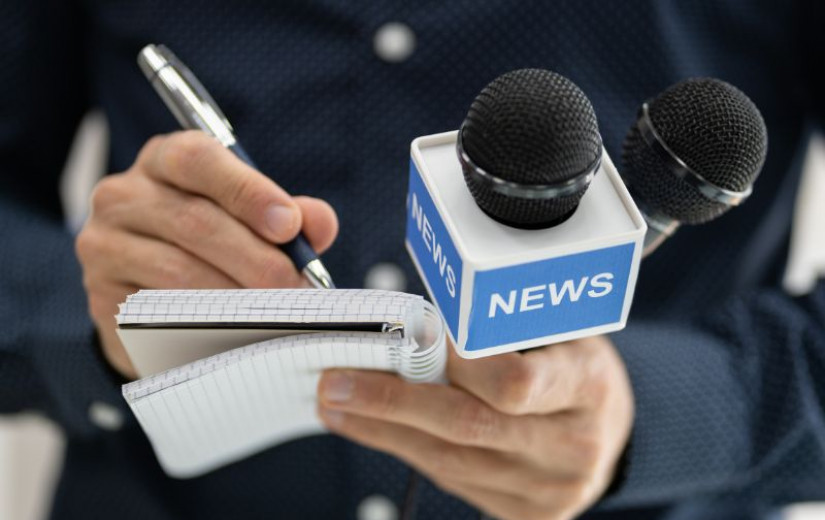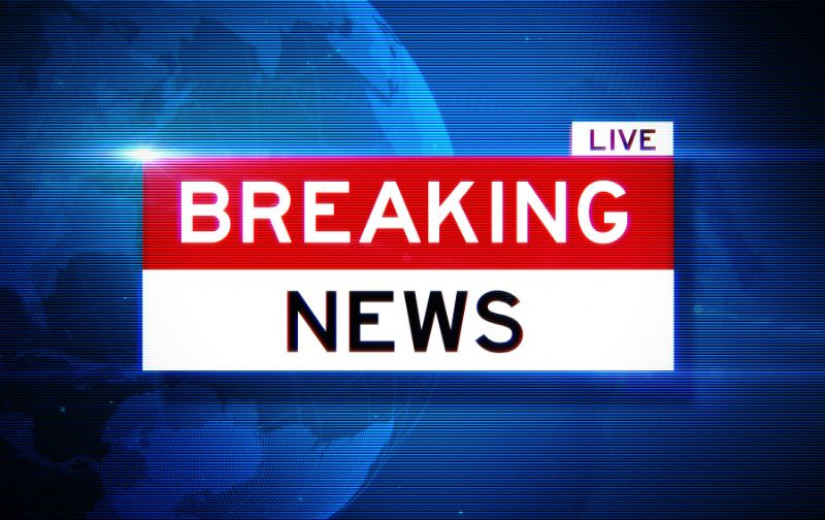
In the past few years, there’s been plenty of Star Trek to talk about—new shows starting, older shows coming to their ends, the franchise’s future on screens big and small alike (although not always entirely successfully). But for some Trek diehards, a peculiar string of numbers is all that has been on their lips: 765874.
That number—the purported Starfleet serial number of Yeoman J. M. Colt from the original Star Trek pilot episode “The Cage”—is the title that has been given to a series of shorts released by OTOY and the Roddenberry Archives since 2022. Leveraging the VFX wizardry of the former and the Star Trek resources of the latter to create a handful of vignettes exploring crucial, unseen moments in Star Trek‘s past, the short-but-sweet series has become something of a viral sensation every time a new release drops, giving Trek fans everything from the moment the Enterprise-D was recovered after its near-destruction, to last year’s emotional farewell to Kirk and Spock celebrating Star Trek: Generations‘ 30th anniversary.
To find out more about the process of creating and filming the shorts—and how everything from the creative decision to revisit Kirk and Spock, to the technological challenges of creative CG replicas of William Shatner and Leonard Nimoy to continue those stories, came about—io9 recently spoke with one of the directors behind the shorts in the project, Carlos Baena. Check out our wide-ranging interview below, as well as some behind-scenes-looks at Baena filming the fourth entry in the series, Unification (including a wild glimpse of actor Sam Witwer in costume as Captain Kirk’s physical stand-in!).
James Whitbrook, io9: Tell me a little bit about how you got involved in creating the 765874 project.
Carlos Baena: In early 2022, I began working with OTOY, Jules Urbach and the Roddenberry Archive as a freelance director, focusing on short-format content. My journey started with directing the first 765874 teaser short and co-directing Memory Wall with Jules, followed by directing Regeneration and Unification in 2023 and 2024. Directing live-action can sometimes be a different experience from my usual work in animation, especially when working on set and shooting on location. It helps to have had some experience directing previous live-action shorts.
My familiarity with Star Trek was limited before joining OTOY, so diving into this world was a great learning process. To deepen my understanding, I explored the original series and iconic films like The Motion Picture and The Wrath of Khan. While I’m not as well-versed in the more recent iterations of Star Trek, I relied on the crew’s insights to help me bridge that gap.

io9: You’d previously teased a set up for Unification in the short released in the wake of Picard‘s third season—in your mind’s eye with this project, were you always heading to tell a story about Kirk and Spock like this?
Baena: It all came together organically. By the time we completed the Spock and Veridian III setup you mentioned in the short Regeneration, we still hadn’t discussed what Unification was going to be. It wasn’t until months later that Jules approached me with the seed of a follow-up idea to Regeneration he had been thinking about—being Jules, someone who grew up on Star Trek and loved it dearly. Later, I learned from him about something William Shatner had discussed in an interview they did with him, which further inspired what Unification could become.
As a director, you take the material and find ways to infuse it with your own experiences to keep it honest and sincere. In my case, that meant drawing from my love for my parents and my emotional journey before their passing. To me, this final reunion between Kirk and Spock had to be just as personal—one last chance for them to be together after decades of meaningful experiences and adventures. My conversations with Jules became the foundation for the film. Story development began with a bullet-point document along with a mood board I created based on those discussions. From there, I was able to launch early on a few people in our team, such as our story artist Ahmed Nasri, our previs artist Jonathan Roybal and one of our VFX artists JJ Palomo.
io9: Unification leaves a lot to viewer interpretation in its view of what exactly we’re witnessing. What made you approach the narrative in this way?
Baena: The material itself shaped my approach to the film’s tone, vision, and execution. Some questions in life simply don’t have answers, and I’ve always resonated with Denis Villeneuve’s quote: “The mystery of life isn’t a problem to solve, but a reality to experience.” The unknown—both in the world around us and within ourselves—has always fascinated me. I also gravitate toward films that challenge me, make me think, and linger in my mind long after they end. Because of this, I wanted the film to be experienced subjectively. This film explores humanity, connection, and what it truly means to be human—including themes of mortality and goodbyes. That’s why I wanted to leave space for viewers to bring their own interpretations, shaped by their personal journeys and perspectives.
Because of it we also made a deliberate choice to exclude dialogue, except for a voice-over from The Wrath of Khan. I’ve always felt that too much dialogue can take away from the power of visual storytelling. Instead, I leaned on body language, facial expression, and internal emotion, shaping the short into a kind of visual poem—one that could speak to anyone, regardless of language or background.

io9: 765874 had already been using facial scanning in prior shorts, but you were dealing with two titans of Star Trek in both Spock and Kirk here. What were the challenges you faced in achieving VFX here compared to the prior 765874 shorts?
Baena: Creating Unification was an ambitious challenge. We were bringing together a heartfelt story, complex performances, new technologies, and emotional depth for one of Star Trek’s most meaningful reunions—without any certainty of how it would be received. At times, we even questioned whether making the film was the right decision. One of our biggest technical challenges was the lack of a film pipeline. Compared to the earlier shorts, we were dealing with a significantly larger number of very complex shots, forcing us to rethink workflow.
Another major shift was how we handled dailies and feedback. In previous 765874 shorts, I managed this through Zoom due to their smaller scale, but with Unification, that approach was no longer feasible. I reached out to producer Kristina Wallace and VFX producer Mark Spatny about integrating SyncSketch, a tool created by my former Pixar colleague Bernhard Haux. Having used it successfully before in a couple of projects in other studios, I knew it would be the best way to track annotations and draw-overs.
Our work on facial VFX also expanded significantly—going from just three face replacements in Regeneration to more than thirty in Unification. Given my background as an animator, I was particularly focused on avoiding the uncanny valley, ensuring digital faces felt believable. But I also relied on Jules Urbach’s knowledge of these two characters’s faces to make sure Kirk and Spock felt like the characters he grew up watching for decades. Additionally, thanks to the expertise of Jules, Mike Ashton and John Lee, OTOY’s facial technology exceeded expectations, and I’m incredibly grateful for their dedication.
io9: You worked with William Shatner directly on bringing Kirk’s likeness back here. What was that process like, and how important was it for you to have his involvement?
Baena: William Shatner was actively involved as a consultant during key moments of production. He was also interested in the early technology tests, seeing their potential and trusting that when handled with care and integrity, they could be used in a way that honored the legacy of Star Trek. For our team, it was essential to have both William Shatner, Susan Bay Nimoy, and Rod Roddenberry’s support, participation, and feedback to ensure we handled this project with the utmost respect.

io9: De-aging technology and digital doubles have become controversial topics of discussion in recent years, but reaction to its use in these shorts has been almost universally positive. What do you think made their use here work for Trek fans?
Baena: The way you approach a project makes all the difference—when it comes from a place of honesty, integrity, and sincerity, it resonates. As mentioned, having the involvement of key producers William Shatner, Susan Bay Nimoy, and Rod Roddenberry, as well as key folks who are deeply connected to the world of Star Trek, such as Robin Curtis, Jules Urbach, Mike and Denise Okuda, Dave Blass, [and] Michael Giacchino among many others, ensured that we treated the material with the respect and care it deserved. Audiences have an innate ability to detect when something is made for the wrong reasons, and they’ll see right through it. But when a project is built from a place of passion and heart, they recognize it and respect it.
io9: Shatner and Leonard Nimoy weren’t the only Star Trek legends you played with here—Gary Lockwood made a return here after not acting for decades. How did that come about? Did you have plans for if he wouldn’t return as Gary Mitchell?
Baena: From the start, the character Gary Mitchell was part of the short, drawing inspiration from the Star Trek comic “A Perfect System.” Initially, our editorial tests suggested his presence subtly, without clearly showing his face. As development progressed, we wanted to explore the possibility of fully visualizing the TOS-era Gary Mitchell from “Where No Man Has Gone Before.” That led our team to approach Gary Lockwood, and once he was on board, OTOY’s VFX team then did some promising facial tests. Having always admired Lockwood’s performance in 2001: A Space Odyssey, I was genuinely excited that he agreed to join our short film.

io9: Unification doesn’t just draw on the original series and its movies for Trek influence—you use Lieutenant Commander Yor from season three of Discovery as well. What made you want to include that link to the series?
Baena: In my conversations with Jules, one of the things that resonated most about Unification was his desire to tell a story that wasn’t just about this truly special friendship reunion but about unifying a world that has been divided for far too long. That idea felt deeply relevant. Yor’s ability to move through time and universes plays a key role in the film. The badge he hands to Kirk isn’t just an object; there is meaning behind it. Spock preserved it, a silent testament to his enduring wish to reunite with Kirk, making this final moment even more profound.
io9: 765874 has been met with huge, viral appreciation. How have you felt seeing the response from the Star Trek community? Has it influenced any future plans you’d want to either continue the project, or explore other avenues for Star Trek storytelling?
Baena: I don’t think any of us ever expected the short to receive such a strong response, and to say I was surprised would be an understatement. I’m incredibly grateful for this journey over the past three years and the opportunities that have come with it. I also want to express my appreciation to the Star Trek community for welcoming me. Coming into this world as an outsider, I’ve now made new friendships that I truly cherish. At its core, my goal was always to tell a human story first. I understood that Kirk and Spock were deeply meaningful to so many—almost like family—which made it a great responsibility for all of us. I know OTOY has plans for more 765874 projects, but with my current commitments, I’m unsure what my involvement might be.
Want more io9 news? Check out when to expect the latest Marvel, Star Wars, and Star Trek releases, what’s next for the DC Universe on film and TV, and everything you need to know about the future of Doctor Who.









